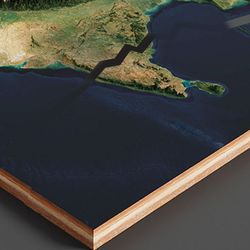Much has been said this election season about the alleged north-south divide. There are those who believe there is a political line drawn across the map of India and those who believe that these are divisive ways to understand elections and the country.
As a Punjabi from Delhi, I have just driven through most of peninsular India. My election road trip series, Dhabas of Democracy—designed to discover all the resplendent flavours of India—began in Kanniyakumari and wove its way through Thiruvananthapuram, Coimbatore, Wayanad, Mysuru, Bengaluru, Kurnool, Hyderabad and onwards to Maharashtra.
I have discovered and loved pazham kanji (watery fermented rice with chili and onions), marvelled at the popularity of kalaan (Tamil for mushroom) served by the street side in a stir fry paste, stood in line to eat a butter masala dosa at Vidyarthi Bhavan, discovered what the history is of Mysore Pak, devoured the onion samosas of Hyderabad and eaten curd rice at every meal I could.
I have gathered some food for thought as well.
While I won’t use the word divide—and normally I hate generalisations—the southern states did feel different. For starters their cities were cleaner and better planned and their surroundings were greener and more lush. The emphasis on education seems greater in many of these states. For instance, in Coimbatore, the high-profile seat of the BJP’s Tamil Nadu chief K. Annamalai, two of the three candidates are IIM alumni (including Annamalai) and the third has a doctorate. I can’t think of another constituency in India with a similar profile of contestants.
The other thing that struck me was the role of religion. I felt the physical presence of religion and faith much more overtly in the south than in the north—temples, churches and mosques. In fact, elaborate wood carvings framed homes in villages, the temples are gigantic compared to the north and much more ornate and grand. And, yet, among everyone I spoke to across peninsular India, not one person mentioned the Ram temple in Ayodhya as an election issue. There was only one elderly gentleman in Kerala who referenced it. But other than that, it came up in conversation when I asked about its impact. Of course, despite the single-minded push by Narendra Modi in the south, the BJP is, at the moment, playing to increase vote share rather than seats. It knows that with the exception of Karnataka, which it swept last time, any gains will be incremental. But, what’s most important is that this response on the temple held true even among Modi voters and fans. In the urban pockets of these states I met many citizens who are big admirers of Modi. But when I asked them why they were voting for the BJP, I often got the same answer—under Modi, India’s standing in the world was stronger than ever before. Sometimes I would follow it up with a question on the Ram temple, and mostly the answer would be that it was of no or little consequence to their political choices.
Modi still holds the distinct advantage in these elections. And maybe the answers I will hear will be very different in the north. But my travels through two phases of the elections convince me that in the southern states there is no political surge around the temple despite religion being a more entrenched and visible part of daily life than in the north.
editor@theweek.in


